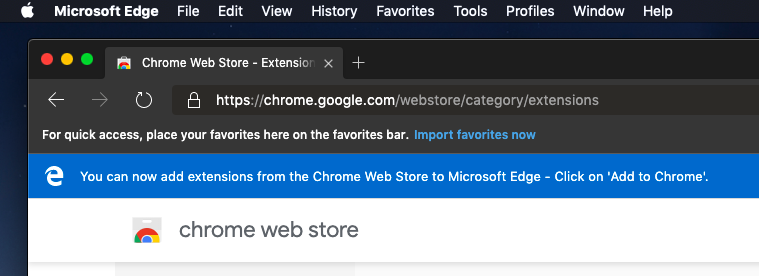In my 25 years in the technology sector, I don’t recall being as shocked as I am right now. And who would have thought it would be Microsoft of all companies that has me in such a state.
I’m writing this post in Google Docs, on my Apple MacBook Air, in the Microsoft Edge browser that’s built on Google Chromium.
Think about that for a moment.
In other words, Microsoft is partnering with Google for a major piece of its ecosystem and is making it available on Apple products.
In a world of constant battling, lawsuits, and compatibility wars, how is this even possible? How is it possible that Google makes its browser technology available to one of its biggest competitors, Microsoft? But that isn’t the really shocking part of this, as Google has been fairly open with Chromium since the beginning.
The biggest shock came last December when Microsoft announced it was moving to Chromium for the underlying technology in its Edge browser -- as the company said at the time, it had gotten mixed response to Edge. That’s putting it mildly. The only mix of responses was between bad and terribly bad. The biggest problem Microsoft faced is that Edge only worked on Windows 10. The fact is, with the rising proliferation of Apple products, Chromebooks, Android devices, and other platforms, the Edge’s reach was just too limited. And developers weren’t rushing out to develop around a browser that only worked on a single version of a single OS.
After evaluating possible solutions to this problem, Microsoft made the incredibly improbable decision to build Edge around Chromium. As the name suggests, Chromium is the underlying open source technology that Google Chrome is built on. In an
interview with The Verge, Joe Belfiore, corporate vice president in Microsoft’s Experiences and Devices division, stated that even Bill Gates, co-founder, was consulted on this decision -- I would have loved to have been a fly on the wall during that conversation.
One of the lessons learned from this is that Microsoft has fundamentally changed in the last few years under the leadership of CEO Satya Nadella. Can you imagine former CEO Steve Ballmer taking this same action? I’ve given Microsoft a lot of grief over the years, but now I’ve got to give the company credit for the recent corporate mindset shift that’s ushering in things I neither expected nor even thought possible. While a lot of work is still in progress, we’re seeing the results in terms of improved products and unexpected innovation.
The second but-nearly-equally-big shock came in Microsoft’s decision this spring to make Edge available for MacOS, and not as an afterthought that comes years or decades later, but even in the early development stages. Let’s face it -- there isn’t a multitude of Mac users clamoring to run the Edge browser on their machines. But, significantly, Microsoft clearly understands that in the new era of technology you need to embrace other platforms, even platforms developed by your fiercest competitors.
Of interest to those of us in the communications technology space, there are a few side notes here that I think are interesting.
In speaking with The Verge, Belfiore also shared one of the drivers for this change: “Google is doing well with [W]eb-based collaborative experiences, the Office team is investing more to improve ours, we want the [W]eb browser to be better.” I found this particularly interesting both in terms of the growing importance of collaboration in the application space and the acknowledgement that a limited browser limits Web-based collaborative experiences.
The collaboration tools that Microsoft is developing today should reach the masses faster and more completely. Since Microsoft will now be developing Edge for the same underlying engine as Chrome, Chrome support should be in the lead of its own development cycles rather than coming much later. This should hopefully end the lack of compatibility or limited compatibility issues where collaboration features (see Skype for Business, Teams, etc.) seem to come to Chrome much later than to Edge or IE. This is arguably more important than multiplatform support for Edge.
As a Mac user, I’m not wishing for yet another browser, but I’m excited about Microsoft applications working better and coming to market faster for Chrome. As I found in playing with the pre-beta developer version of Edge, even the pre-beta developer version of Edge supports Chrome extensions. That was a nice surprise.
Of final note, when the Google and Microsoft teams started discussing how they would communicate with each other in this new collaboration, Microsoft agreed to use Google Hangouts, as noted in The Verge article. This is telling of Microsoft’s new stance of putting the needs of its partnership ahead of its ego.
Well done Microsoft. You continue to surprise me in pleasant ways. I guess at some point I shouldn’t be surprised by your innovation and positive moves.
Maybe that moment is now.










